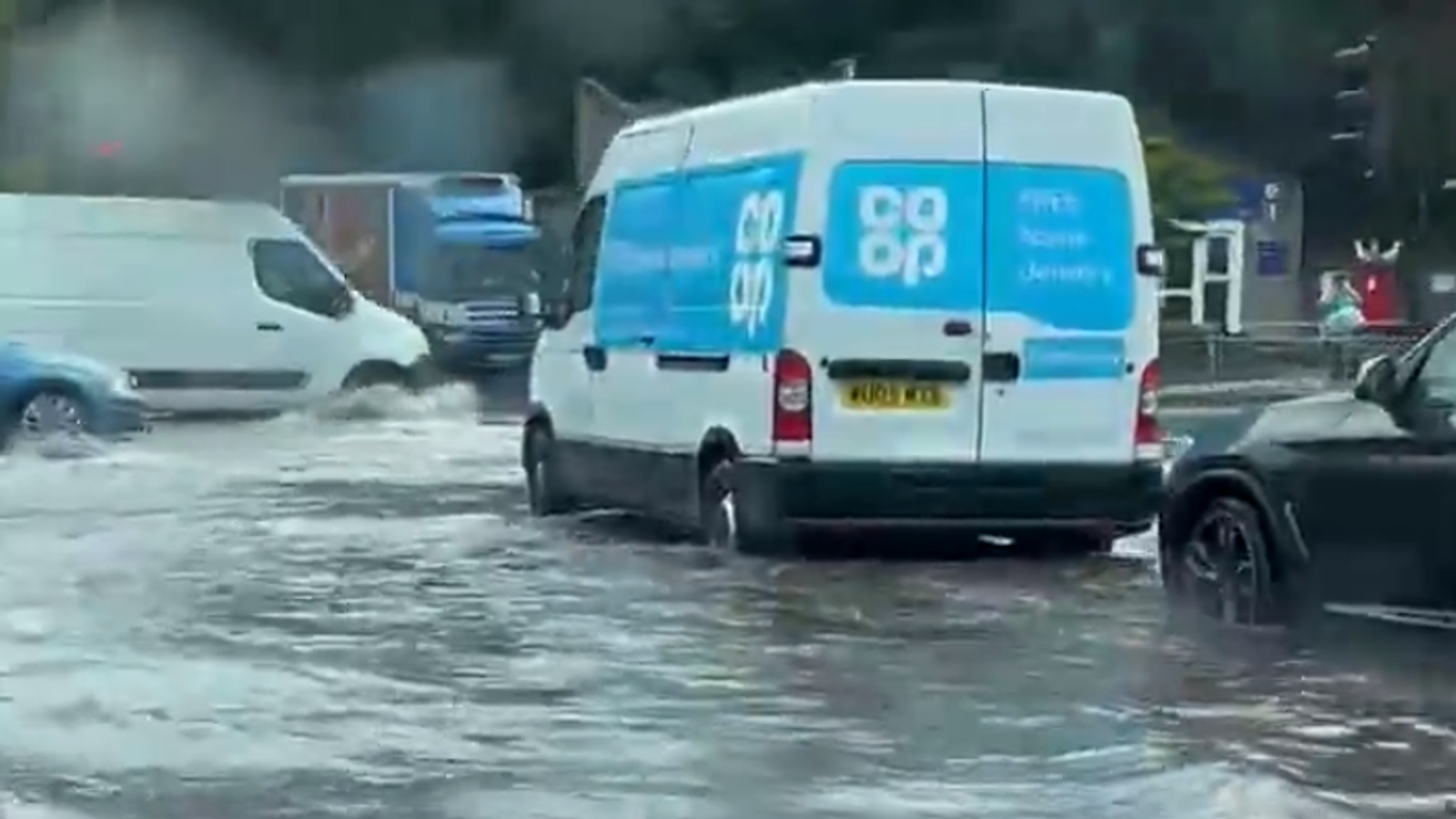Heavy rain and flooding have hit some parts of Devon and Cornwall as thunderstorms start to sweep across the South West and East of England.
Videos shared on social media showed a roundabout near a river in Truro, Cornwall, quickly flooding as showers moved in.
An amber thunderstorm warning has been issued by the Met Office for the county, as well as Devon and Somerset, with the chance of homes and businesses flooding considered likely.
It comes after weeks of little rain and high temperatures caused droughts across several parts of the country.
Get the five-day forecast where you are
Residents have also been warned there could be power cuts, fast flowing or deep floodwater causing danger to life, transport disruptions and communities cut off due to flooded roads.
One man, Ruan Sims, said the water level was the highest he has ever witnessed in Cornwall.
Fears over long-term water supplies as drought sees levels under Britain fall ‘exceptionally low’
The reservoirs in England worst affected by drought, with levels at a 25-year low last month
Fire severity risk raised to ‘exceptional’ as four-day amber alert begins
“It was quite mad. We have never seen it go that high,” the garage manager said.
“It didn’t go into the garage, but it came right up to the wall.”
He added that water flooded in suddenly as the rain started, but then fully drained away about 10 minutes later.
Yellow thunderstorm warnings in place
Yellow thunderstorm warnings have been issued for most of the UK on Tuesday and for southern England on Wednesday.
Storms have already developed in east-coast counties like Essex, Suffolk and Lincolnshire.
“There have been areas of the country which have predominantly seen the heavy showers today, in the southwest of England,” said Met Office meteorologist Tom Morgan.
“We have seen some flooding in parts of Cornwall and Devon,” he continued, adding that there have been “very difficult driving conditions, flash flooding, some hail with the thunderstorms and some lightning”.
“There is as well just as much potential for tomorrow to be as impactful as it has been today,” he said.
Inverness in Scotland was hit by heavy rain on Sunday, with footage and photos shared online showing water leaking through the ceiling of a cinema and flooding a Tesco store.
‘Prepare for flash flooding’
In London, residents have been told to prepare for flash flooding in the event of heavy downpours.
Mayor of London Sadiq Khan said he has written to “tens of thousands” of households who live in homes that could be affected.
Read more:
What happens during a drought and how can you help?
How little rain has your area had compared to previous years?
“We learned a lot from last year in July when there was flash flooding caused by a huge amount of rain – two months’ worth of rain – in just a couple of hours and people’s homes businesses and public transport was flooded,” he said.
“We are concerned that over the next few days we could see a huge amount of rain in a short period of time which could lead to flash flooding.”
Last year, several train and tube stations were forced to close due to intense rainfall.
Floods in Ireland
Heavy downpours and flooding have struck parts of Ireland after thunderstorms.
Forecasters extended a status orange thunderstorm weather warning to 10pm on Monday night for Munster as well as counties Wexford, Carlow, Kilkenny, Laois, Offaly, Kildare, Wicklow and Dublin.
Weeks of high temperatures and dry conditions
As a result of the dry ground in recent weeks, experts have warned the likelihood of flooding is higher as surfaces act “a little bit like concrete” and water drains off instead of seeping through.
“There is the damage to homes and businesses these floods can cause, and inconvenience with transport disruptions, but if it is very heavy in one place it can also be very dangerous,” said Professor Hannah Cloke, an expert in hydrology at the University of Reading.
Follow the Daily podcast on Apple Podcasts, Google Podcasts, Spotify, Spreaker
On how it could affect cities and towns, she said: “If you get a heavy rain in a city, the drainage system can cope up to a point, but if there is really heavy rain it can overwhelm the system – the rain cannot run away quick enough.”
On Friday, the National Drought Group moved parts of the South West, parts of southern and central England and all the East of England into official drought status, while six water companies announced hosepipe bans.







